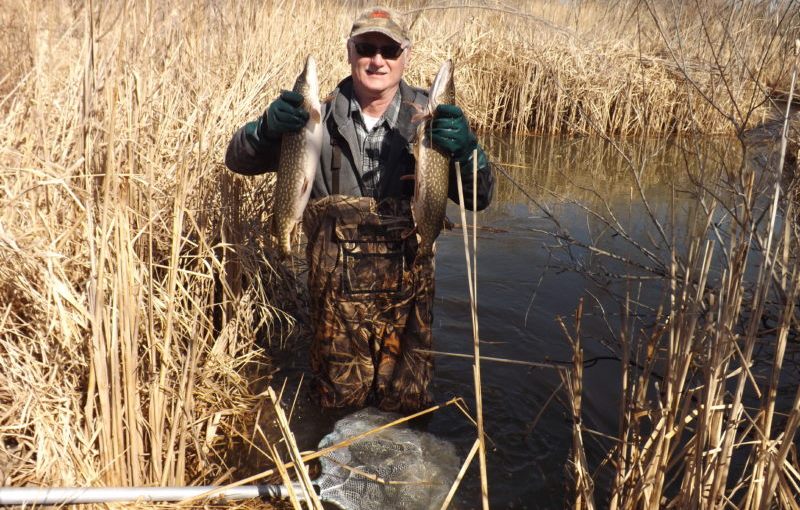Northern Pike are the second largest predator fish in the bay of Green Bay in Wisconsin. Green Bay is a fertile estuary of the Fox River, and an arm of Lake Michigan.
Wisconsin Department of Natural Resource’s fishing creel surveys, netting results and other observations have noted the once robust Northern Pike population on Green Bay has fallen precipitously. Successful “early ice” Northern Pike fishing on Green Bay has become only a fond memory.
Walleye restoration has been a success story, but the depleted Northern Pike population, along with the recovering but a still small population of Muskellunge, has led to an unbalanced predator/prey balance on the bay, strongly tipped toward forage fish such as Gizzard Shad or White Perch.
In 2007, the Brown County Land and Water Conservation Department received a grant from the National Fish and Wildlife Foundation to restore the Bay’s declining Northern Pike population. Then we received a four year grant from the U.S. EPA’s Great Lakes Restoration Initiative (GLRI) and additional funding from the Green Bay /Fox River Natural Resources Damage Assessment Trustee Council, U.S. Fish and Wildlife Service, Ducks Unlimited, and other sources.
To begin our work, we found surprisingly little research on Green Bay’s Northern Pike. We relied on past work from Dick Rost– retired Wisconsin Department of Natural Resources fish technician and others to form specifics of our restoration plan.
We set two goals:
- To find and remove impediments to fish migration in streams and road ditches leading from the Bay to potential spawning wetlands on Green Bay’s West Shore;
- To restore wetland destinations that have become degraded and lost the ability to provide suitable spawning habitat.
Since 2007, we have completed 50 wetland restorations or impediment removals on streams and road ditches on Green Bay’s west shore, primarily in the Village of Suamico and Town of Pittsfield.
We’ve found that completed wetland restorations benefit many species of amphibians, waterfowl, reptiles and other fish species. They either live in the restored habitat or use it to reproduce.
See full Fox-Wolf Watershed Alliance article by Charles Larscheid.

